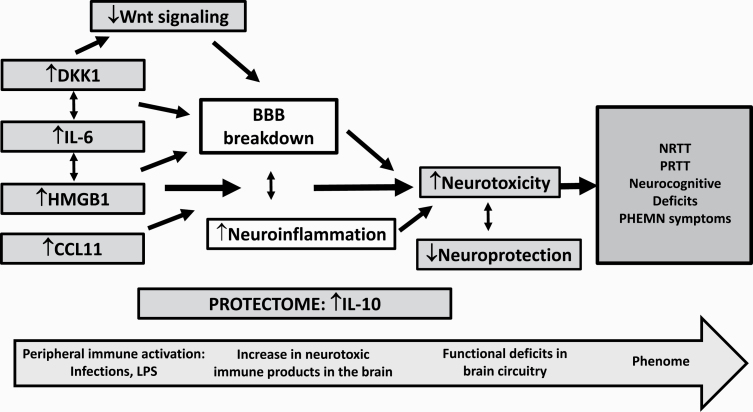Fig. 5.
The proposed mechanisms of action of the different pathways leading to the phenome features of schizophrenia, including neurocognitive deficits and psychosis, hostility, excitation, mannerism, and negative symptoms (PHEMN) and a nonresponse to treatment (NRTT). We suggest that an infectious process or increased LPS from Gram-negative bacteria may activate peripheral immune-inflammatory pathways, including interleukin-6 (IL-6),14 high mobility box protein 1 (HMGB1), Dickkopf 1 (DKK1), and CCL11 (eotaxin). Increased IL-6 levels associate with increased HMGB1 and DKK1. The latter may cause a downregulation of Wnt signaling, and all factors together may cause the breakdown of the blood-brain barrier (BBB) and, consequently, neuroinflammation. NRTT patients also show marginally increased levels of IL-10, a negative immune-regulatory cytokine, which has protective functions and is part of the protectome. Nevertheless, impairments are detected in other parts of the protectome (eg, lowered natural protective immunoglobulin M) leading to lowered (neuro)protection,14,17 which together with increased neurotoxicity may cause the phenome of schizophrenia.

